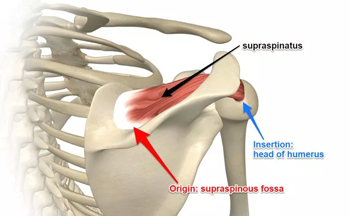Functional test and the empty can test.
What is a functional test?
What is an empty can test and how does it work?
Firstly, functional tests are used to test the strength or load capacity of a single muscle.
Secondly, the importance of a functional test is due to avoid misinterpretation of the muscle status and joint health conditions.
Furthermore, functional tests can be positive or negative.
So, for positive, we refer to a test that gave us the result we were suspicious of.
For example, if I do an empty can test, and the client during the test complains of pain in the shoulder acromion, the test is positive.
But if for instance, the client complains of pain in another area of the shoulder or arm, the test is negative.
Even so, as a therapist, we are aware that other area of the arm or shoulder needs to be looked after.
What is an “empty can test”?
An “empty can test” is a functional test used to validate the state of health of the supraspinatus tendon, at the high of the acromioclavicular joint. 
In addition, to better understand how this specific test works, let’s look in too the anatomy of the Supraspinatus m.
Origin: Supraspinatus fossa of scapula
Insertion: Greater tubercle of the humerus
Action: Abduct the shoulder and stabilise the humeral head in the glenoid cavity.
As per result, the action of the supraspinatus is to laterally elevate the arm and hold in place the humeral head (the Humerus is the bond of the upper arm).
Furthermore, the supraspinatus is one of the rotator cuff muscles.
The rotator cuff muscles are:
Supraspinatus, Teres minor, Infraspinatus and subscapularis.
But let’s get back to the empty can test. The empty can test can be done from seated or standing.
In addition, the test is conducted in 2 different stages.
Initially, we will ask the client to bring the arm in flexion at about 45° and in abduction at 45°.
The arm now is sitting aside from the client’s body, on a diagonal line.
Now will ask the client to rotate the arm on itself, as if they are emptying a can.
As per the result, if at this stage of the functional tests, the client feels pain in the shoulder at the acromioclavicular joint, the test is positive.
If that’s not the case, then we can proceed with the resistant part.
If this post is talking to you, and you are in need of a massage, book your next session by clicking here.
The resistant part consists of placing our hand on the client’s forearm and asking the client to meet the resistance, at 3 different stages.
For each stage, the resistance increases and lasts from 3 to 5 seconds.
If during any of the 3 stages the client feels pain, at the high of the acromioclavicular joint, the test is positive.
But why the client can feel pain during this type of functional test?
To answer this question, we have to look in too the acromioclavicular joint anatomy, but I will talk about this topic in the next blog post.


Giovanni La Rocca
Giovanni moved to Melbourne, Australia, from Italy in 2008 and became a citizen in 2017. He started studying massage therapy in 2016, then completed a Bachelor of Health Science in Clinical Myotherapy in August 2024. During those years, he also specialised in Thai Massage and Manual Lymphatic Drainage for presentations like Lipoedema and Lymphoedema. Nowadays, he runs his clinic in Fitzroy North, Melbourne, where he integrates movement therapy into his practice to enhance overall well-being. He also values meditation, having completed several Vipassana courses. Committed to continuous learning, he aims to share his expertise in integrated therapies to help others achieve balance and resilience.